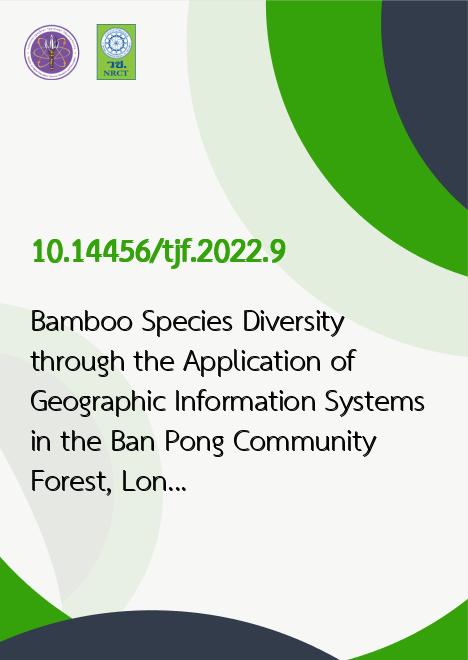
|
Bamboo Species Diversity through the Application of Geographic Information Systems in the Ban Pong Community Forest, Long District, Phrae Province |
|---|---|
| รหัสดีโอไอ | |
| Creator | Siriwan Banjay |
| Title | Bamboo Species Diversity through the Application of Geographic Information Systems in the Ban Pong Community Forest, Long District, Phrae Province |
| Contributor | Natnicha Narknoi, Kritsada Phongkaranyaphat, Monthon Norsaengsri, Wannaubon Singyoocharoen, Montree Banjongkarn, Kunthaphong Krueama, Lamthai Asanok |
| Publisher | Kasetsart University |
| Publication Year | 2565 |
| Journal Title | Thai Journal of Forestry |
| Journal Vol. | 41 |
| Journal No. | 2 |
| Page no. | 109-122 |
| Keyword | Species diversity, Bamboo, Geographic Information System, Community forest |
| URL Website | https://li01.tci-thaijo.org/index.php/tjf/issue/view/17490 |
| Website title | Thai Journal of Forestry |
| ISSN | 2730-2180 |
| Abstract | The purpose of this research was to study the bamboo species diversity in the Ban Pong community forest, Long district, Phrae province. Twenty-four sample plots of 20 meters ื 20 meters size of each were established within which the number of bamboo clumps and culms were determined. The diameters at breast height of 3 culms/clump were measured randomly. The diversity of bamboo species was analyzed, and potential areas identified using the Jenks natural breaks classification. Five species in 4 genera and 1 bamboo family were identified. The species diversity index was 1.00, with Pai Sang Nuan (Dendrocalamus membranaceus) having the largest culms (22.82 ฑ 3.22 cm.) while Pai Rai (Gigantochloa albociliata) having the smallest (12.44 ฑ 2.51 cm). The dominant bamboo species in community forest as indicated by the highest importance value index (IVI) was Pai Sang Nuan (D. membranceus) (213.80%). The potential area classification through Jenks natural breaks optimization showed that Pai Sang Nuan (D. membranceus), Pai Khao Larm (Schizostachyum pergracile), Pai Rai (G. albociliata), and Pai Lai Lor (Gigantochloa nigrociliata) were at a moderate level (32.56, 29.95, 34.32 and 28.63 % of the total area), while Pai Bong Dam (Bambusa tulda) was at a low level (31.01%). We conclude that the distribution of bamboo species and the quantity of each type of bamboo should be considered for a suitable and sustainable utilization of bamboo. |